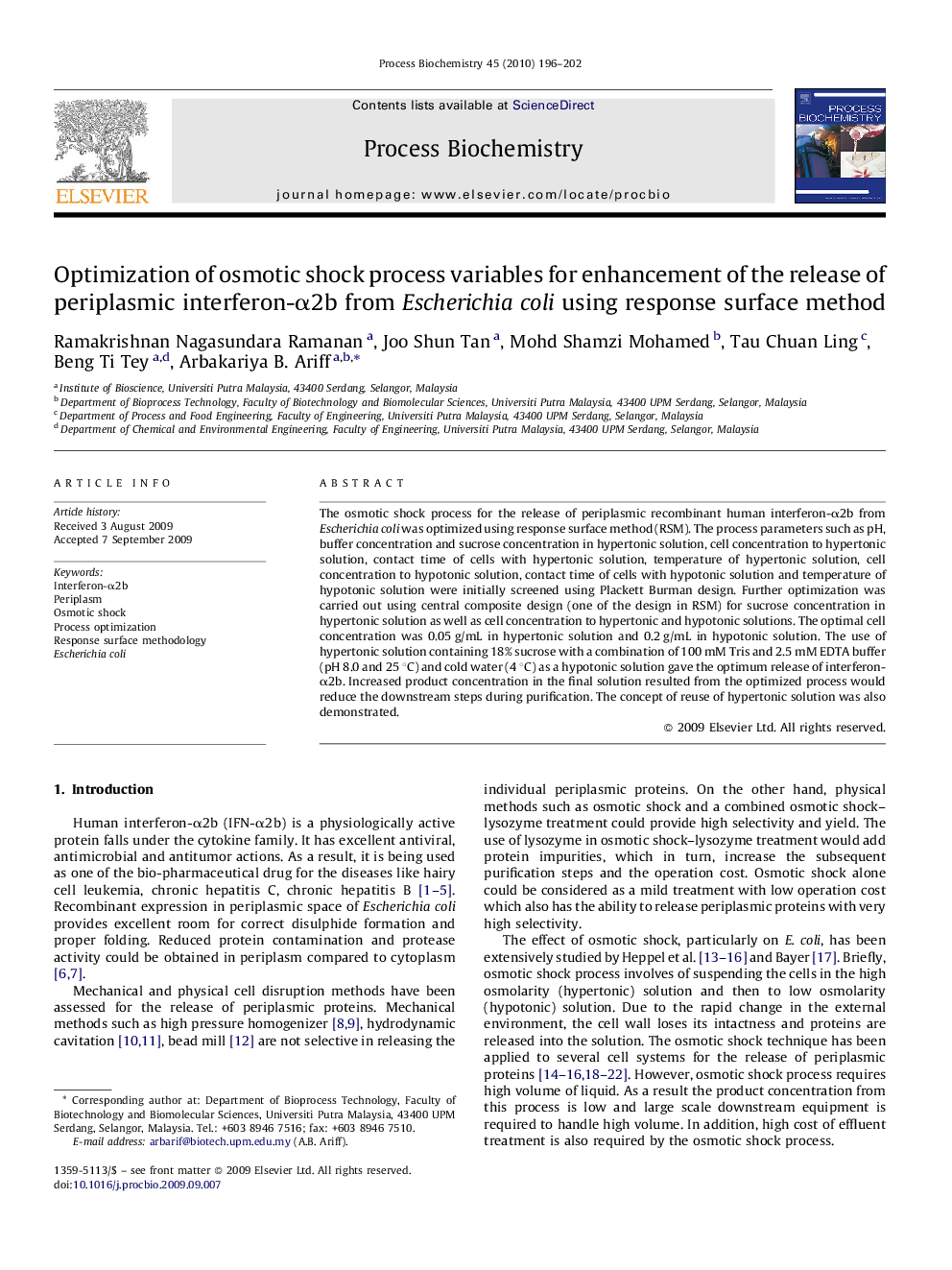| Article ID | Journal | Published Year | Pages | File Type |
|---|---|---|---|---|
| 35024 | Process Biochemistry | 2010 | 7 Pages |
The osmotic shock process for the release of periplasmic recombinant human interferon-α2b from Escherichia coli was optimized using response surface method (RSM). The process parameters such as pH, buffer concentration and sucrose concentration in hypertonic solution, cell concentration to hypertonic solution, contact time of cells with hypertonic solution, temperature of hypertonic solution, cell concentration to hypotonic solution, contact time of cells with hypotonic solution and temperature of hypotonic solution were initially screened using Plackett Burman design. Further optimization was carried out using central composite design (one of the design in RSM) for sucrose concentration in hypertonic solution as well as cell concentration to hypertonic and hypotonic solutions. The optimal cell concentration was 0.05 g/mL in hypertonic solution and 0.2 g/mL in hypotonic solution. The use of hypertonic solution containing 18% sucrose with a combination of 100 mM Tris and 2.5 mM EDTA buffer (pH 8.0 and 25 °C) and cold water (4 °C) as a hypotonic solution gave the optimum release of interferon-α2b. Increased product concentration in the final solution resulted from the optimized process would reduce the downstream steps during purification. The concept of reuse of hypertonic solution was also demonstrated.
